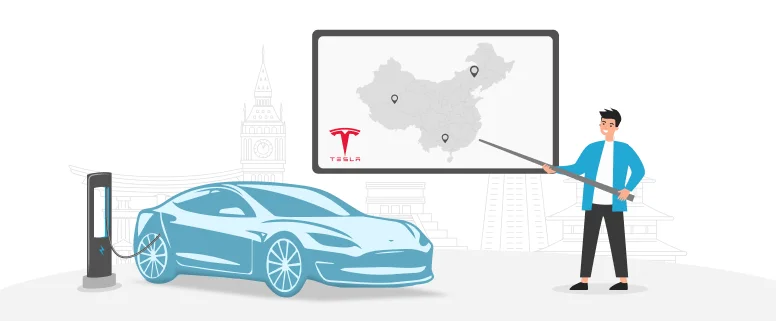In today’s digital world, the internet has made it much easier for businesses to reach new customers and grow internationally. A website is the digital outlet of your business that allows consumers to develop an understanding of your brand. However, do you know how to transform your website, currently catering to a local audience, into a global powerhouse?
If not, don’t worry, we’ve got you covered. In this comprehensive guide, we will equip you with the knowledge of how you can successfully globalize your website. So, let’s begin.
Table of Content
- The Power Of Globalizing Your Website
- Key Steps To Take Your Website Global
- Making A Site Accessible To International Audiences
- Localizing Your Website For Specific Regions
- Maintaining Your Global Website’s Authority
- Strategizing Content Management for a Global Website
- Developing a Consistent Brand Voice Across Languages
- Utilizing User-Generated Content
- Creating Fresh Content for Each Market
- Building Trust with International Visitors
- Translation Quality and Accuracy
- Multilingual Customer Support
- Payment Options
- Building Local Partnerships
- Strategize For Attracting A Global Audience
- Global Marketing and Promotion
- Optimizing for International Social Media Platforms
- Utilizing Paid Advertising Tools
- Participating in International Industry Events
- Website Analytics and Performance Tracking
- Monitoring Traffic from Different Countries
- Analyzing Engagement Metrics
- A/B Testing for Different Regions
- Common Mistakes To Avoid While Going Global
- Not Approaching Your Target Audiences The Right Way
- Using Machine Translation Without Human Review
- Ignoring Local Customer Support Needs
- Neglecting Mobile Optimization
- Conclusion
The Power of Globalizing Your Website
Website globalization is adapting your website’s content to reach a wider audience across different languages and cultures. Imagine you are looking for a piece of specific information about an international product, and the website speaks a different language, would you be able to acquire the required information? No, right?
A multilingual website, displaying relevant products and information that resonates with the target audience helps you to tap into new markets, exponentially increase brand awareness, and boost sales. A whole new world of potential customers awaits! But, before you jump in, it is crucial to develop an understanding of your target audience. Research different markets to identify the countries with a genuine interest in your products and services.
Key Steps to Take Your Website Global
Website globalization is a thorough process consisting of multiple steps. Each step involves further stages that you need to cover up. However, starting your journey without professional help will leave you in despair. Therefore, partnering with professional website localization services helps you easily get through the process. Let’s break down and explore the essential steps involved:
1. Making a Site Accessible to International Audiences
Here are the key considerations that will help you to create a website easily accessible to your target audience:
- Choosing the Right Domain Name and URL Structure
The domain name represents a website’s address on the search engines. It helps your audience to find you in the highly saturated online space easily. To cover a large geographical area consider using a generic TLD (Top-Level Domain) like “.net” or “.com.” However, if you plan to target a specific region, you can create a subdomain on your main domain such as “.it” for Italy and “.es” for Spain.
- Building a Multilingual Website
There are multiple ways to translate your website content. The most significant are human and machine translation. Human translation services have native linguists with subject-matter expertise. They allow you to linguistically and culturally adapt the website according to the target audience’s preferences. Machine translation, on the other hand, is a fast and cost-effective option. However, it requires post-editing by native speakers to ensure linguistic and cultural accuracy.
- Optimizing for International Search Engines
Optimizing your website helps you to rank higher in search engine result pages. The core principle of website optimization remains the same; to get more traffic. Keyword research is crucial for each target language to optimize your meta descriptions and titles accordingly.
- Currency and Measurement Formatting
You might be familiar with the paperless or cashless payment method. It’s the digital payment method in multiple countries because people in today’s digital world do not like to keep paper money – no pun intended. However, assuming that everyone uses the same dollar sign and measures distance in feet wouldn’t take you anywhere. Therefore, adapt the currency and measurement formats on your website as per the target region’s preferences.
2. Localizing Your Website for Specific Regions
As of now, you are aware of how to make your website accessible to an international audience. So, let’s look at the art of making your website culturally relevant to your audience – localization.
- Localizing Website Content
Go beyond word-to-word conversion from one language to another. Adapt your content to resonate with the diverse audiences’ preferences, interests, and cultural nuances. The best practice is to use local references, humor, and colloquial examples relevant to the audience’s daily routine.
- Images and Design Considerations
Do you know visuals play a crucial role in the success of your business’s online presence? High-quality visuals can improve the overall experience of readers. So, make sure your images speak the audience’s preferred language. Moreover, avoid culturally insensitive visuals and prioritize designs and colors that resonate with your target audience.
- Date, Time, and Numbers Formats
While setting up a new phone, you choose a specific region to follow the right time and date. That’s because every country has a different time zone, calendar, and format. Be mindful of these variations and localize dates, times, and number formats according to local routines.
- Legal and Regulatory Compliance
Every country follows different rules and regulations associated with data privacy and e-commerce. Moreover, some countries have different laws for foreign businesses. Make sure your website complies with all relevant regulations to avoid legal trouble.
3. Maintaining Your Global Website’s Authority
A global website is not a “set it and forget it” project. It requires frequent changes to match the pace of ever-evolving international trends. Here is how you can keep your website thriving on the global landscape:
- Strategizing Content Management for a Global Website
While going global, do not just translate the content. Strategize your website content to build a community and trust with international audiences. Let’s do it:
- Developing a Consistent Brand Voice Across Languages
Getting poor translation services increases the chances of misinterpretation. However, acquiring professional translation services for websites helps you to deliver the core brand message accurately across languages. Moreover, you can adapt the tone and style to build brand recognition in the global market.
- Utilizing User-Generated Content
Enhance user engagement by allowing visitors to leave reviews in the comment section in their native language. Make sure to respond with the same potential. It will help you to build trust with your international audience and cultivate a sense of community.
- Creating Fresh Content for Each Market
It is crucial to identify the specific needs and interests of each region. Conduct local keyword research to identify the latest trends, and topics, and create content that resonates with the target audience’s needs.
- Building Trust with International Visitors
For any online business, building trust is crucial and difficult at the same time. It becomes even more challenging to reach a new audience through online channels. Luckily, website localization services are available to help small or new businesses efficiently reach the global marketplace. Other than that, here are some key strategies that will help you build trust with the international audience:
- Translation Quality and Accuracy
There is no room for errors while communicating with a global audience. To ensure a seamless connection with international customers, guarantee accurate and precise translation of website content. It will help maintain a professional brand image and avoid confusing visitors.
- Multilingual Customer Support
A multilingual website has a great impact on the audience. Offering customer support in your audience’s local language shows your positive attitude and care towards your customers.
- Payment Options
Every country has a specified payment system which becomes confusing for global customers to take care of. However, make it easy for them to purchase your products by integrating familiar and secure payment options trusted by the audience.
- Building Local Partnerships
Combining your localized strategy with your partner’s local experience increases your chances of survival in a new market. Moreover, partnering with local businesses improves your efficiency to gain valuable insights, attract a wider audience, and establish a huge customer base in the global market.
4. Strategize for Attracting a Global Audience
Now that your website is fully prepared and localized, it’s time to attract a global audience:
- Global Marketing and Promotion
How would your audience get to know about your availability in the market? You have to promote your business, right? Let’s discuss the ways through which you can easily tap into new markets:
- Optimizing for International Social Media Platforms
Social media is considerably the best and fastest medium you can use for the global expansion of your business. Moreover, it is a powerful tool to build a connection with your global audience. It is crucial to know that each social media platform has a different user base and culture. You should consider the preferred languages and content formats to optimize social media platforms for international audiences.
- Utilizing Paid Advertising Tools
Boost your website efficiency using paid advertising platforms such as Google Ads. It allows you to target specific locations and demographics. Moreover, these tools help you to reach ideal customers around the globe efficiently.
- Participating in International Industry Events
Industry events and conferences are beneficial in multiple ways. They bring great opportunities for small businesses to expand their network, meet with potential partners, and showcase their products on a global scale. Therefore, stay up to date with the events relevant to your industry in your target markets.
- Website Analytics and Performance Tracking
Website analytics is the best way to track the performance of your website. It helps you to understand your global audience and optimize your website for better performance. Here is how to use website analytics to enhance performance:
- Monitoring Traffic from Different Countries
Monitoring website traffic helps you to identify which markets are responding well and where you need to make strategic changes. Moreover, it allows you to utilize your resources and efforts in the right place.
- Analyzing Engagement Metrics
Engagement metrics such as bounce rate and time spent on your website can tell how your content resonates with your target audience. Analyze these metrics for each region to improve the audience’s user experience.
- A/B Testing for Different Regions
A/B testing is an effective approach to see the performance of different versions of your website. Moreover, you can use this technique to test variations of your website content, design, and CTAs for different regions.
Common Mistakes to Avoid While Going Global
Here are a few precautions or common mistakes that you need to avoid on your global journey:
Not Approaching Your Target Audiences the Right Way
While going global, depending on a one-size-fits-all approach is a complete disaster. On the international landscape, you encounter diverse audiences from different backgrounds. It requires you to understand your audience’s linguistic and cultural preferences and the legal landscapes of your target markets.
Using Machine Translation Without Human Review
Machine translation is a rapid and cost-effective method of translation. However, it is not as accurate as human translation. It means you cannot ignore the importance of professional translators. Therefore, to get your website content translated accurately but swiftly, use post-editing translation services to have your content reviewed and edited by native speakers. Moreover, it will help you to avoid cultural improprieties.
Ignoring Local Customer Support Needs
Multilingual customer support improves your brand’s reputation and helps you to win your customer’s trust. Therefore, do not leave your global customers hanging. Provide customer services in their native language to provide an exceptional user experience.
Neglecting Mobile Optimization
PCs and laptops are long gone a story. The world is going mobile! So, make sure your website is optimized for mobile devices as well.
Conclusion
If you have read this blog carefully, congratulations, you have taken a significant step towards the global success of your business. Remember, website globalization is an ongoing process. You need to keep changing the website design, content, and information to match the speed of the ever-evolving market trends. However, carefully adapting your website for new markets will refine your approach and enhance your potential to discover the world efficiently.
If you are planning to tap into foreign lucrative markets, localizing your website is a must. Here at CCJK, we have the tools, expertise and experience needed to localize your website for fast global growth. Get in touch for more details!



